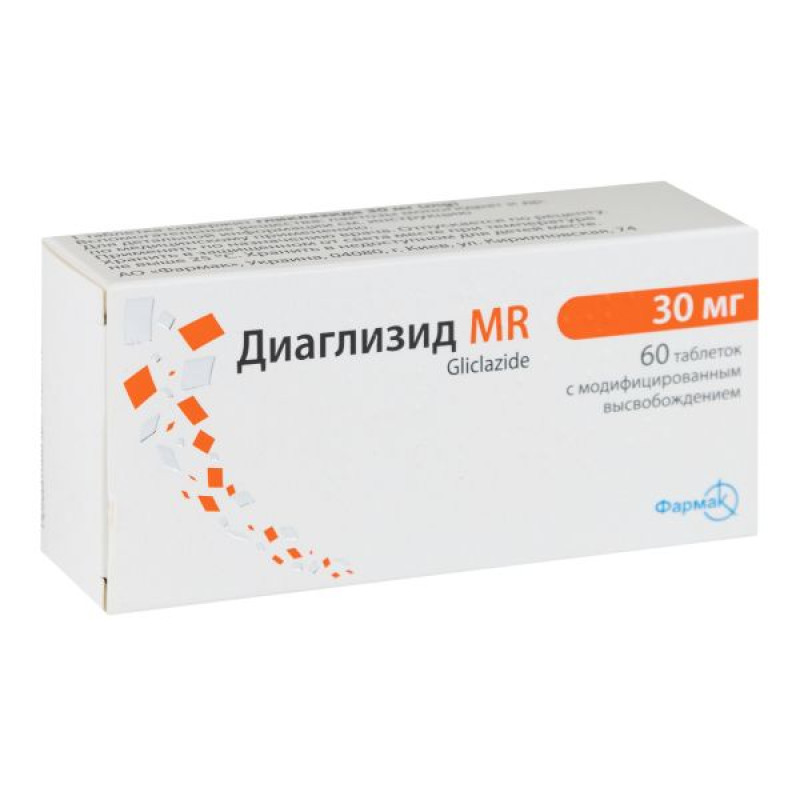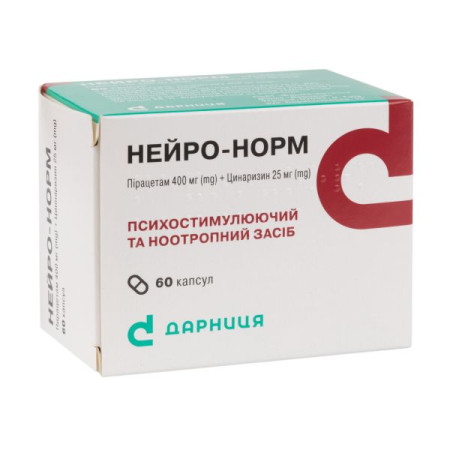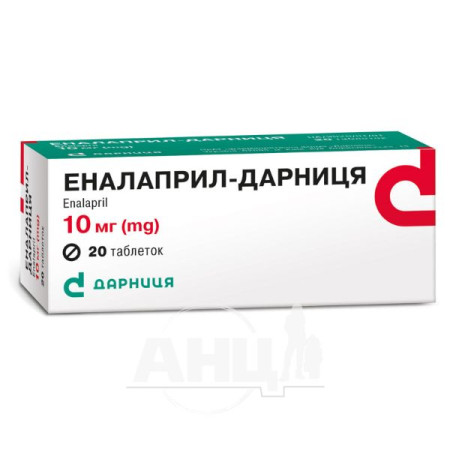Diaglizid MR modified-release tablets 30 mg No. 60

Pharmacological properties
Pharmacodynamics. Gliclazide is a sulfonylurea derivative and belongs to the second generation of synthetic oral hypoglycemic drugs that lower blood glucose levels by stimulating pancreatic β-cells. The drug restores the early peak of insulin secretion when glucose enters the body and enhances the second phase of insulin secretion by β-cells. Gliclazide increases the effectiveness of insulin action, reduces insulin resistance by increasing the utilization and accumulation of glucose in the muscles and reducing its synthesis in the liver. The drug enhances insulin-stimulated glucose metabolism, accelerating its transport to tissues, and also activating muscle glycogen synthetase.
Gliclazide counteracts the development of diabetic vascular complications, including microangiopathy and atheromatous macroangiopathy. This effect is realized by reducing platelet adhesion and aggregation, normalizing prostaglandin metabolism (the balance of which is disturbed in diabetes mellitus), enhancing vascular fibrinolytic activity. In addition, the drug is a powerful free radical scavenger (in diabetes mellitus, a significant increase in their production is observed), normalizes vascular permeability, prevents the development of microthrombosis and atherogenesis. Gliclazide slows down lipid deposition. The drug contributes to weight loss, normalizes lipid metabolism (reduces the concentration of cholesterol, triglycerides, free fatty acids in blood plasma).
Pharmacokinetics. After oral administration, gliclazide is completely absorbed in the gastrointestinal tract. Food intake does not affect the rate and extent of its absorption. After taking modified-release tablets, the concentration of gliclazide increases progressively during the first 6 hours, after which it reaches a constant level, which is maintained from 6 to 12 hours. Individual differences in pharmacokinetics in patients are insignificant. The binding of gliclazide to blood plasma proteins reaches 95%. Gliclazide is metabolized mainly in the liver and excreted by the kidneys in the form of inactive metabolites. T ½ of gliclazide from the body is approximately 16 hours. No significant differences in pharmacokinetic parameters have been found in elderly people compared to young people. A single daily dose of gliclazide 30 mg in modified-release tablets ensures the maintenance of effective drug concentrations in blood plasma for 24 hours.
Indication
Type 2 diabetes: lowering and controlling blood glucose levels when glucose levels cannot be normalized by diet, exercise or weight loss alone. Prevention of complications of type 2 diabetes: reducing the risk of macro- and microvascular complications, including new cases or worsening of nephropathy.Application
For oral use.
Prescribed only for adults.
The daily dose can vary from 30 to 120 mg.
The daily dose should be taken once during breakfast.
Swallow the tablets whole (DO NOT crush or chew).
If the patient forgets to take the tablets, the dose should not be increased the next day.
As with all hypoglycemic agents, individual selection of the dose of Diaglizid MR is necessary depending on the patient's individual response to treatment (blood glucose level, glycosylated hemoglobin HbA1c).
Initial dose and dose selection. The recommended initial dose is 30 mg/day (1 tablet of Diaglizid MR, 30 mg tablets). With effective control of glucose levels, treatment can be continued at this dose. If it is necessary to strengthen blood glucose control, the daily dose can be successively increased to 60; 90 or 120 mg. It is recommended to increase the dose gradually, with an interval of 1 month, except in cases where there was no decrease in blood glucose levels during 2 weeks of treatment. In this case, the dose can be increased at the end of the 2nd week of treatment.
The maximum recommended daily dose is 120 mg (2-4 tablets).
Diaglizid MR tablets should not be divided.
Transferring a patient from other oral hypoglycemic drugs to Diaglizid MR. Diaglizid MR can be prescribed instead of another oral hypoglycemic drug. In this case, the dosage and T ½ of the latter should be taken into account. A transition period is usually not required. You should start with a dose of 30 mg (Diaglizid MR tablets 30 mg) with subsequent dose adjustment (see Initial dose and dose selection).
When transferring from hypoglycemic sulfonylurea drugs that have a longer T ½ than Diaglizid MR, a break in treatment for several days may be necessary to avoid the cumulative effect of the two drugs and the development of hypoglycemia. Treatment with the drug is started with a dose of 30 mg (Diaglizid MR tablets 30 mg) per day with subsequent dose adjustment as described above.
Concomitant use with other hypoglycemic agents. Diaglizid MR can be used in combination with biguanides, alpha-glucosidase inhibitors and insulin. If adequate blood glucose control is not achieved in patients taking Diaglizid MR, concomitant insulin therapy may be initiated under close supervision.
For elderly patients (65 years of age), the dosage regimen of Diaglizid MR is the same as for patients under 65 years of age.
For patients at risk of hypoglycemia (see Precautions and Interactions), a minimum initial dose of 30 mg/day (Diaglizid MR tablets 30 mg) is recommended.
For patients with severe vascular diseases (ischemic heart disease, severe carotid artery disease, diffuse vascular diseases), a minimum initial dose of 30 mg/day (Diaglizid MR tablets 30 mg) is recommended.
For the prevention of complications of type 2 diabetes. The strategy of intensive glycemic control involves a gradual increase in the dose of Diaglizid MR to 120 mg/day. The dose increase should be carried out by monitoring the HbA1c level, following the recommendations for diet and exercise, and controlling the risk of hypoglycemia. It is also possible to add other hypoglycemic drugs, such as metformin, acarbose, thiazolidinediones or insulin.
Contraindication
Hypersensitivity to gliclazide or other sulfonylureas, sulfonamides or any component of the drug; insulin-dependent diabetes mellitus (type I); diabetic precoma and coma, diabetic ketoacidosis; severe hepatic or renal failure; treatment with miconazole.Side effects
Based on experience with the use of gliclazide and other sulfonylurea derivatives, the following undesirable effects may be observed.
Hypoglycemia. As with other sulfonylureas, gliclazide can cause hypoglycemia with irregular meals and especially when skipping meals. The occurrence of hypoglycemia may be accompanied by such characteristic symptoms as: headache, intense hunger, nausea, vomiting, fatigue, sleep disturbances, agitation, aggression, impaired concentration and reaction, depression, agitation, visual and speech disorders, aphasia, tremor, paresis, sensory disturbances, dizziness, feeling of weakness, loss of self-control, delirium, convulsions, shallow breathing, bradycardia, drowsiness and loss of consciousness, which can lead to coma and death.
In addition, disorders of the adrenergic system may be noted: increased sweating, sticky sweat, anxiety, tachycardia, arterial hypertension, palpitations, chest pain, arrhythmia.
Usually, the symptoms of hypoglycemia disappear after taking carbohydrates (sugar). However, the use of sugar substitutes in this case will not be effective. Experience with other sulfonylureas suggests that even if the initial measures taken were effective, hypoglycemia may occur again.
If a hypoglycemic episode is severe or prolonged and the patient's condition is temporarily controlled by consuming sugar, emergency medical attention or even hospitalization is necessary.
Gastrointestinal: abdominal pain, nausea, vomiting, dyspepsia, diarrhea, and constipation. Following the recommendations for taking the drug during breakfast will help avoid or minimize the occurrence of these manifestations.
The following undesirable effects are less commonly noted:
Skin and subcutaneous tissue disorders: rash, pruritus, urticaria, erythema, maculopapular rash, bullous rash.
From the blood and lymphatic system (occurs rarely): anemia, thrombocytopenia, leukopenia, granulocytopenia. These phenomena usually disappear after discontinuation of treatment.
On the part of the hepatobiliary system: increased levels of liver enzymes (ALT, AST, LF), hepatitis (isolated cases). If cholestatic jaundice occurs, treatment with the drug should be discontinued.
These undesirable effects usually disappear after discontinuation of the drug.
On the part of the organ of vision: temporary visual disturbances may occur, especially at the beginning of treatment, due to changes in blood glucose levels.
Disorders that may occur with the use of any sulfonylurea drug: erythrocytopenia, agranulocytosis, hemolytic anemia, pancytopenia, allergic vasculitis, hyponatremia, increased liver enzymes and even impaired liver function (e.g., with cholestasis and jaundice), hepatitis with regression after discontinuation of sulfonylurea drugs or rarely - with subsequent life-threatening liver failure.
The ADVANCE study monitored serious adverse events. No previously undescribed adverse events were observed in the group of patients with type 2 diabetes treated with an intensive glycemic control strategy. Several patients experienced severe hypoglycemia. Most episodes of hypoglycemia were reported in patients receiving concomitant insulin therapy.
Special instructions
Factors that increase the risk of hypoglycemia: the patient refuses or cannot follow the doctor's recommendations (especially this applies to the elderly); poor, irregular nutrition, periods of fasting and changes in diet; imbalance between physical activity and carbohydrate intake; alcohol consumption; renal failure; severe liver failure; drug overdose; certain endocrine disorders: thyroid dysfunction, hypopituitarism and adrenal insufficiency; simultaneous use of certain medications (see Interactions with other drugs).
Renal and hepatic insufficiency. The pharmacokinetics and/or pharmacodynamics of gliclazide may be altered in patients with hepatic and severe renal insufficiency. Episodes of hypoglycemia in these patients may be prolonged and appropriate treatment is required.
Deterioration of glycemic control in patients taking hypoglycemic drugs may be caused by infection, fever, trauma, or surgery. In some cases, the use of insulin may be necessary.
The hypoglycemic efficacy of any oral hypoglycemic agent, including gliclazide, may vary over time. This may be due to progression of the disease or to a decrease in response to treatment. This phenomenon is known as secondary insufficiency, which is different from primary insufficiency, when the drugs are ineffective from the very beginning of treatment. Before concluding that a patient has developed secondary insufficiency, it is necessary to check the correctness of the prescribed dose and the patient's adherence to the diet.
Laboratory tests: Glycosylated hemoglobin (or fasting blood glucose) is recommended to assess blood glucose control.
In patients with glucose-6-phosphate dehydrogenase deficiency, the use of sulfonylureas may cause hemolytic anemia. Gliclazide should be prescribed with caution in such patients and alternative therapy without sulfonylureas should be considered.
The drug contains lactose, therefore, this drug is not recommended for people with rare hereditary forms of galactose intolerance, glucose-galactose malabsorption syndrome, or Lapp lactase deficiency.
Use during pregnancy and breastfeeding. Oral hypoglycemic drugs should not be used during pregnancy.
There is no experience with the use of Diaglizid MR during pregnancy.
When planning pregnancy or confirmed pregnancy, it is necessary to transfer the woman from oral hypoglycemic drugs to insulin.
Diaglizid MR is contraindicated during breastfeeding due to the possibility of hypoglycemia in the child.
Children: Gliclazide is not recommended for use in children due to the lack of studies in this category of patients.
Ability to influence the reaction speed when driving vehicles or operating machinery. Patients need to know the symptoms of hypoglycemia, be able to recognize them and, if they occur, be careful when driving vehicles or operating various mechanisms, especially at the beginning of treatment.
Interactions
When using drugs that may cause hypo- or hyperglycemia, the patient should be warned about the need for careful monitoring of blood glucose levels during treatment. It may be necessary to adjust the dose of hypoglycemic drugs during and after treatment with these drugs.
Drugs that may increase the risk of hypoglycemia when administered concomitantly
Concomitant use is contraindicated: miconazole (for systemic use, oral gel) enhances the hypoglycemic effect with the possible development of symptoms of hypoglycemia and even coma. Concomitant use is not recommended: phenylbutazone (for systemic use) enhances the hypoglycemic effect of sulfonylurea derivatives (replaces their binding to blood plasma proteins and / or reduces their excretion); ethanol increases the risk of hypoglycemic reactions (due to inhibition of compensatory reactions), which can lead to hypoglycemic coma. Alcohol and drugs containing ethanol should be avoided.Combinations requiring caution
Drugs that may increase the risk of hyperglycemia when used concomitantly
Concomitant use is not recommended: danazol has a diabetogenic effect. Combinations requiring caution: chlorpromazine (neuroleptic) when used in high doses (100 mg/day) increases blood glucose levels (by reducing insulin release); glucocorticoids (for systemic and local use: preparations for intra-articular, cutaneous and rectal use) and tetracosactide increase blood glucose levels with possible development of ketoacidosis (reduce carbohydrate tolerance); ritodrine, salbutamol, terbutaline (iv) - may increase blood glucose levels due to β 2 -agonist effect. Combinations to be taken into account: anticoagulants (e.g. warfarin, etc.): When used simultaneously with anticoagulants, sulfonylurea derivatives may potentiate the anticoagulant effect of the latter. If necessary, the dose of anticoagulants may be adjusted.Overdose
Overdose of sulfonylureas can lead to hypoglycemia.
Symptoms of moderate hypoglycemia (without loss of consciousness and neurological symptoms) should be corrected by taking carbohydrates (sugar), changing the dose of the hypoglycemic drug and / or diet. Close monitoring of the patient should continue until his condition stabilizes.
Severe hypoglycemia with the development of coma, convulsions, or other neurological disorders requires emergency medical care with immediate hospitalization.
When a diagnosis of hypoglycemic coma is made or when a coma is suspected, the patient should be given 50 ml of a concentrated glucose solution (20-30%) intravenously, followed by continuous administration of a less concentrated glucose solution (10%) at a frequency that will maintain a blood glucose level of 1 g/l. It is necessary to ensure constant monitoring of the patient's health. Depending on the patient's condition, the doctor decides on further treatment tactics.
Gliclazide is characterized by a high level of binding to blood plasma proteins, therefore dialysis is ineffective.
Storage conditions
At a temperature not exceeding 25 °C.
There are no reviews for this product.
There are no reviews for this product, be the first to leave your review.
No questions about this product, be the first and ask your question.










